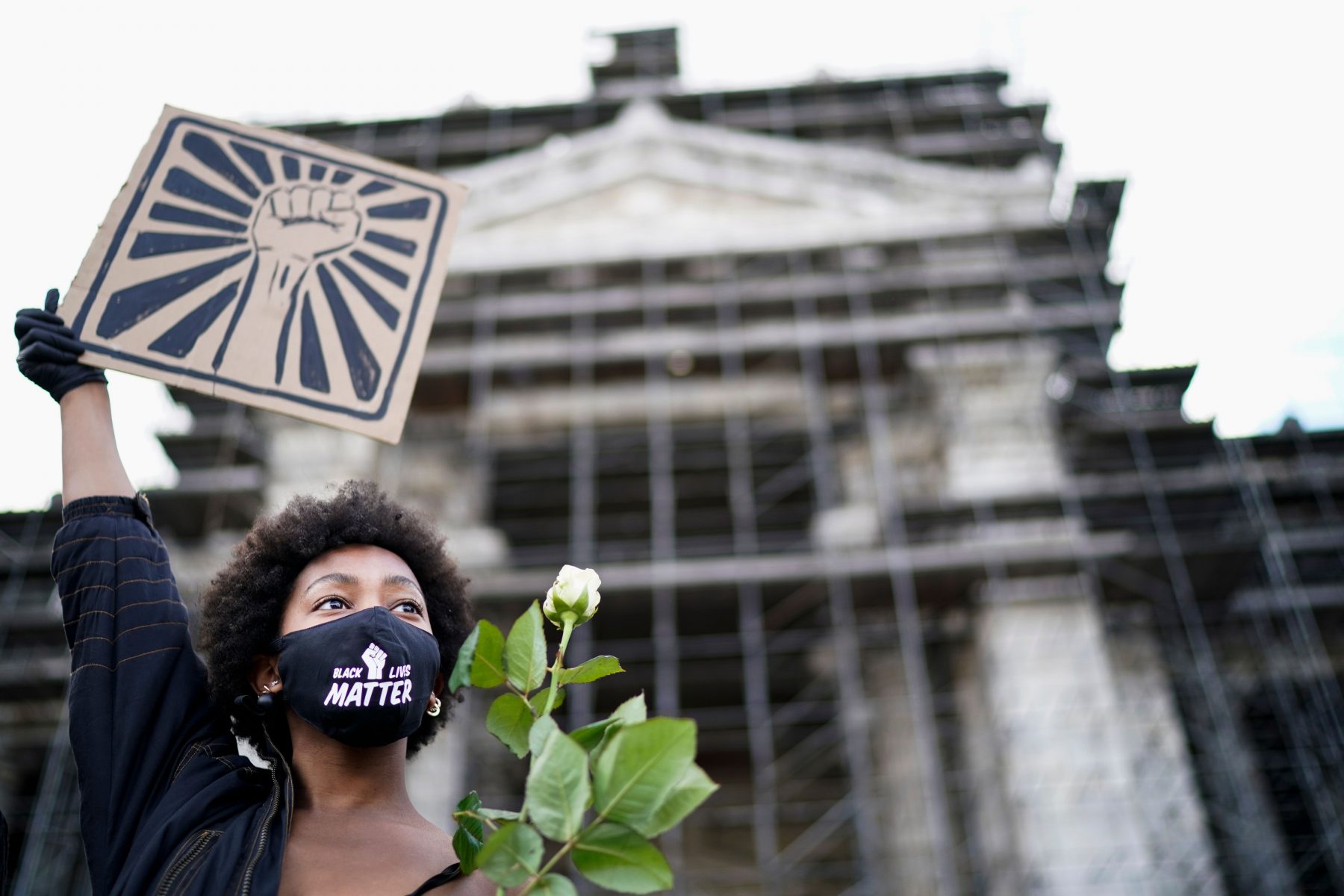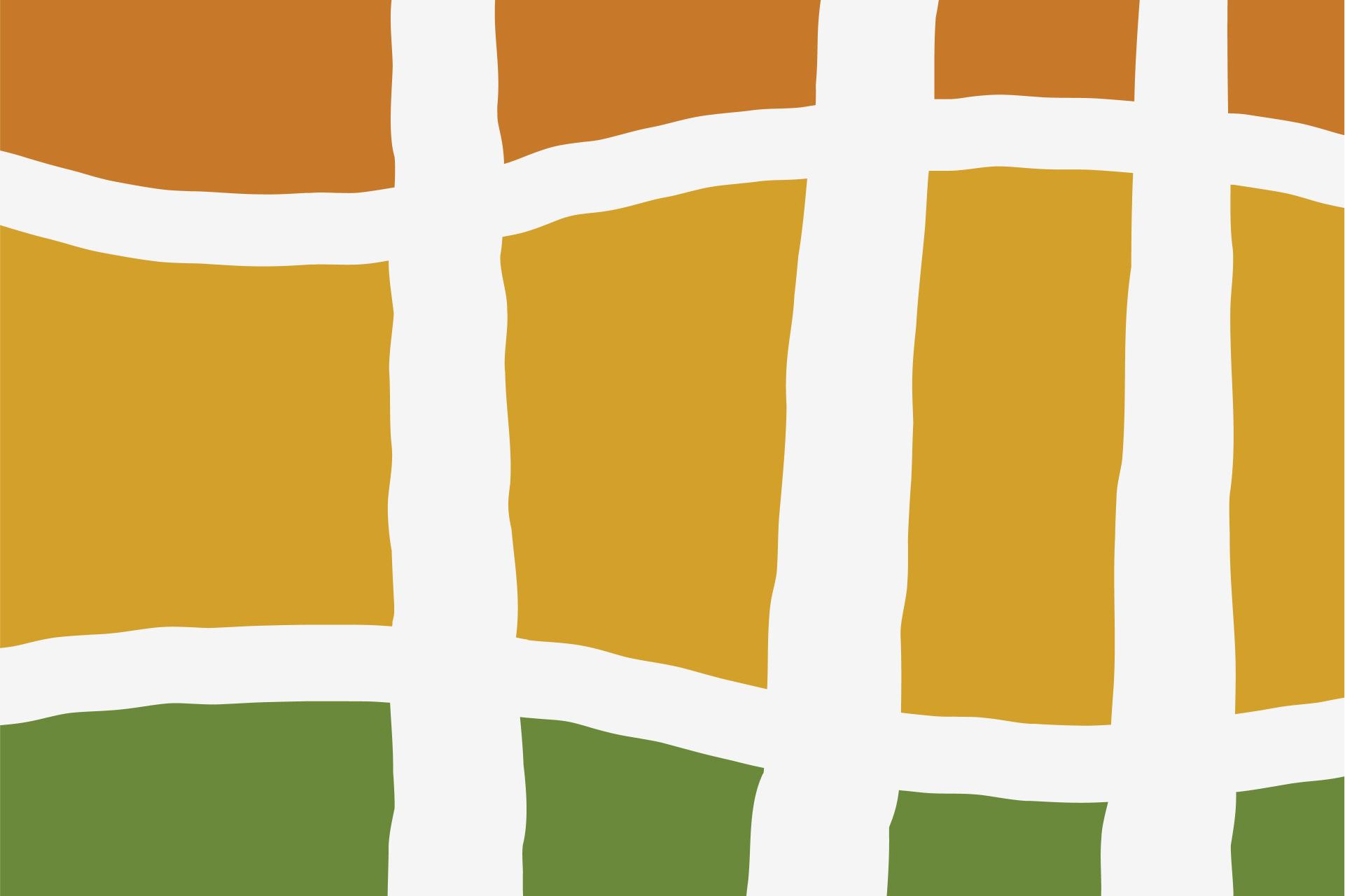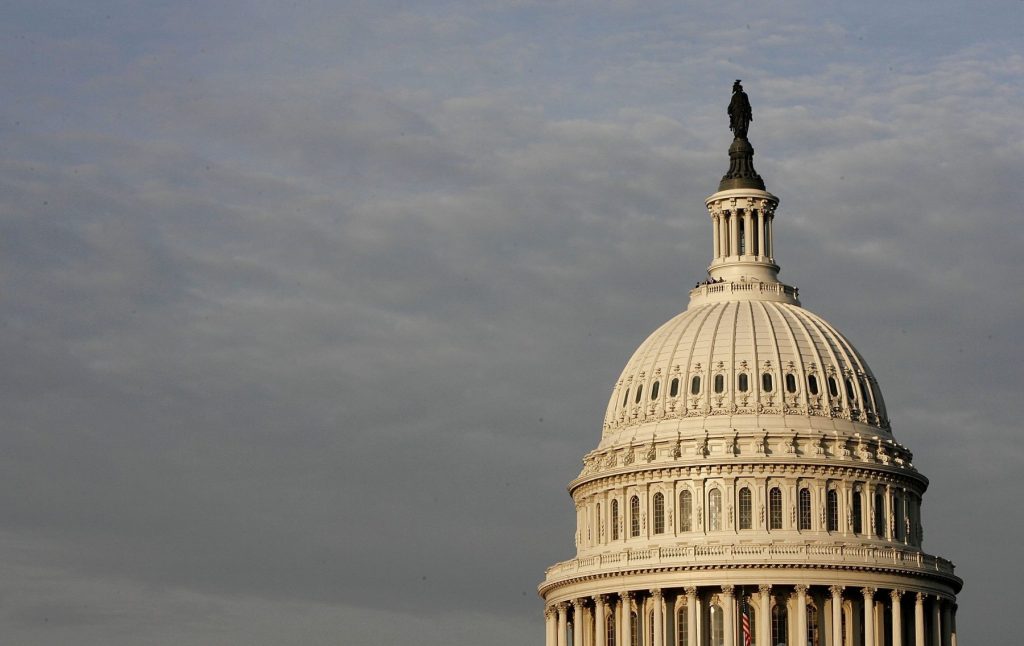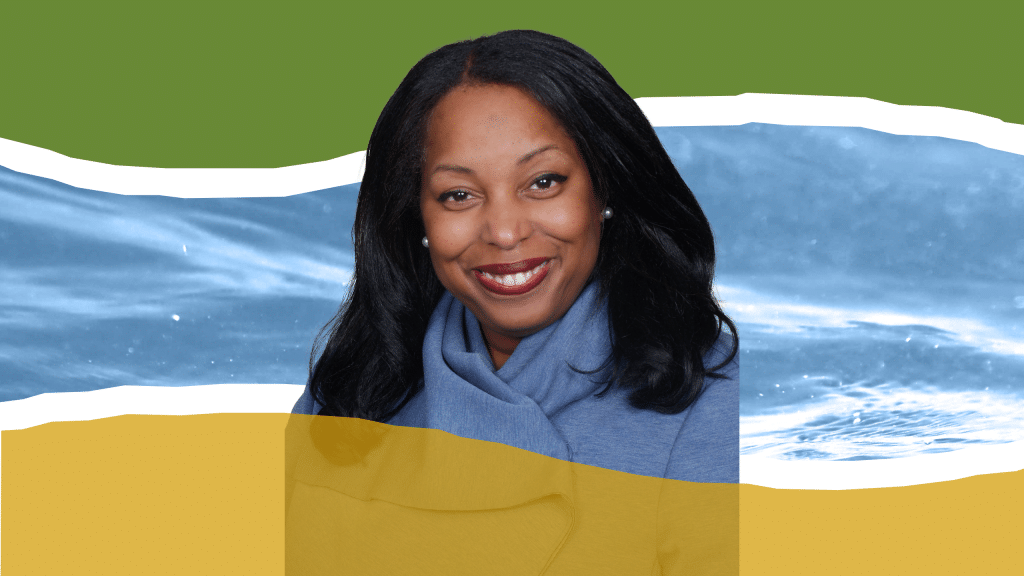Part 1: A conversation with Solidaire Network’s Rajasvini Bhansali about how philanthropy can show up in service to building movements for justice and equity
The events of 2020 were deeply challenging, by many accounts — a time when trauma impacted so many of us, our families, our health, our communities, and our planet. Within the Black community in the United States, the past year was an especially trying time of deepening fear, frustration, and pain but also tremendous activism, transformation, and hope. The struggle for freedom and justice that people of color have long endured gave rise last summer to a wave of demonstrations that swept across cities and states in the weeks following the brutal murder of George Floyd, leading up to the presidential election, and beyond it.
It was a “movement moment,” as Rajasvini Bhansali would say — an opportunity for those who want to use their wealth and resources for collective impact to lean in and be in partnership with grassroots organizers and movement leaders working toward societal transformation. Bhansali is the executive director of Solidaire Network, a community of donor organizers who work together to get critical resources and an abundance of solidarity to the frontlines of social justice movements as they are happening. As part of the Packard Foundation’s commitment to racial justice and equity, we have joined with Solidaire Network in providing $20 million to the Black Liberation Pooled Fund, which allocates grant funding to primarily Black-led multiracial organizations around the country working for social change.
Bhansali sat down with Packard Foundation’s Carlin Johnson Politzer, program officer within the Office of the President, to talk more about the work of Solidaire Network and to share some of the insights and learnings that she and her team have gathered about the importance of partnership and trust in philanthropy and movement building. Their conversation came just a week after a violent mob stormed the Capitol building in Washington, D.C., setting the stage for another challenging year of work ahead to move our society towards greater justice, equity, and unity.
Please note: the interview has been edited for length and clarity. [/vc_column_text][vc_column_text]Politzer: How has the Solidaire team been managing through this time? What is your energy level like at this point, and what are you hearing from your partners in terms of the work that you are focused on?
Bhansali: All things considered, our team is actually doing really well. We shut down the office for two weeks at the end of the year, and everybody got a little bit of a respite. I think it was necessary given that 2020 was such a year on every front. Often when we’re talking about these larger forces at play in politics and social change, we forget that it all translates into real concerns in people’s lives. Having the time off to reset, to attend to family and friends and community, felt really important. Many of our staff come from movement and community work, so just having a moment to check in with the broader family that they all belong to also felt really important. And people have come back re-energized. They feel like the events of the last few weeks have reminded us again why we are in a long-term struggle. Our work is far from being done. We have to prepare for it like athletes, right? It’s not a sprint, it’s a marathon, and we have to ensure that we have the right systems in place so that we can be in it for a while. We as a team are also aware of how those of us in philanthropy are extremely privileged when compared to what our movement partners have to endure as they battle injustice in our communities.
Politzer: Solidaire Network seeks to work at the intersection of philanthropy and Black-led organizing as a network of people with wealth who are making change by working in partnership with movements. For those of us who may be less familiar with Solidaire’s model of grantmaking, can you share your strategy and what you call your Theory of Liberation?
Bhansali: We are only in our seventh year since our inception as an organization, and so in many ways Solidaire is still new. We got here because of the Occupy Wall Street movement, the Arab Spring moment, the Black Lives Matter movement — these efforts told our founders that there was a real necessity for people with wealth who are already working with movements to respond immediately when a movement moment arises. Movement moments are not disparate but are, in fact, part of a long struggle for freedom and liberation to uplift the causes of the people who have been most oppressed in our society.<
Movement moments are not disparate but are, in fact, part of a long struggle for freedom and liberation to uplift the causes of the people who have been most oppressed in our society.
That’s the origin story of Solidaire. When I started in 2018, the organization was going through another moment of change and one thing that was becoming clear is that we needed a forward-looking, long-term strategy to coalesce newfound energy. The events of 2016 led to a lot of growth within Solidaire’s progressive-minded donors, and institutional funders were finding their way to Solidaire, wanting a place where they could organize with others and have collective impact. Our Theory of Liberation comes from us engaging in a listening and learning exercise with our grantee partners, as well as our donor base, to see where the synergy was.
And it became quickly apparent that Solidaire had value inside of the philanthropic ecosystem. In fact, one of our greatest assets was our clarity around the role of racial justice and racial justice movements in order to make systemic transformation possible. Our movement partners were saying, “We trust Solidaire implicitly because of the way you’ve shown up in service of movement building, of grassroots organizing, of power-building strategies.” And in talking to our donor members, we realized they wanted to be led and organized to move a lot more wealth resources. So, we set for ourselves this audacious goal of moving $1 billion in the next 10 years so that grassroots organizers in the U.S. have the resources they need to win.
Politzer: Speaking of moving money and audacious goals, the Black Liberation Pooled Fund was created in the summer of 2020 in response to the racial justice uprisings that were taking place. The Fund provides an opportunity for donors and foundations to allocate investments in Black-led organizations that have been leading the charge in the movement for social and racial justice. Can you talk more about what prompted you to create this fund, what needs you were seeing, and what hopes you have for impact?
Bhansali: The summer of 2020 was seminal in the history of those of us who love social justice and equality and freedom. It was so important that, in the middle of a despairing, disappointed, saddened state of things, we had one of the most important responses to police brutality in the United States. We had a social movement uprising to stand against the unlawful and hideous killings of Ahmaud Arbery, of George Floyd, of Breonna Taylor, and the momentum of the response from people who were previously not politicized, people who didn’t even think of racial justice as their issue, coming together. Fundamentally, we all care about dignity and we care about people’s lives to exist without repression.
Those events showed us that the moment has come for a deep reckoning around racism and exploitation. We saw institutional philanthropy and individual donors rise to meet the call to action that was coming from movements, particularly the Movement for Black Lives. Movement leaders were inviting philanthropy to play a really important role, not just in writing statements or making pledges, but in fact putting our money where our mouth was.
Movement leaders were inviting philanthropy to play a really important role, not just in writing statements or making pledges, but in fact putting our money where our mouth was.
Solidaire similarly rose to meet the occasion. We have always had an aligned giving strategy to support Black-led organizing, but we had often done it in ways that inspired, motivated, and directed our donors to directly give to that ecosystem. We had very rarely considered how creating a vehicle at Solidaire might actually ease the burden of individual donors in doing the necessary due diligence while also helping institutional foundations make a commitment to racial justice in a substantive way.
Politzer: The Packard Foundation ended up being an early investor in the Black Liberation Pooled Fund, committing $20 million to the fund over five years. Your team has been working in partnership with leaders from the Movement for Black Lives, as well as other movement leaders, to direct those funds to areas where the need is most urgent. The first $2 million of that investment supported the urgent and immediate security needs of movement leaders facing threats of violence as well as a heightened risk of danger amid a tumultuous political climate here in the U.S. Can you tell us a little bit more about those needs and the kinds of organizations and leaders you were able to direct support to?
Bhansali: We were already going to prioritize the movement protection and security needs that were arising throughout the summer when we started to see a lot of activity on the dark web targeting Black movement leaders. We were hearing stories from our network of existing movement partners about how suppression efforts were taking an entirely new militancy. The movement leaders were facing deep violence in their offices, sometimes even their homes. Vigilantes were finding out where our leaders live and stalking them. They were fearing for the lives of their children while doing this principled and courageous work. And then on top of that you had an economic crisis fueled by the pandemic, which was making it harder and harder for people to hold onto to their livelihoods while mitigating all of these threats.
We were also partnering with some of the research groups and think tanks that Solidaire has developed relationships with that monitor the rise of White supremacist groups and far right vigilantism in the United States. By the time we got to September of last year, it became clear that we had to prepare ourselves and be ready, because there was only going to be an escalation as we got closer to the elections. And all of that materialized.
Luckily, the Movement Protection Fund had been formed. Right from the beginning, we decided to make it easy to access these funds. Our criteria were simple: We had a secure form on our website that takes literally five minutes to fill out. We took the burden upon ourselves, rather than passing it to the grant-seeker, to do the due diligence and vetting to make sure that these were legitimate requests, because we also didn’t want to get the resources in the wrong hands by moving so fast that we didn’t actually pay attention to the dynamics in the field. Between the secure application process and an extremely responsive committee made up of our Board members and staff and a consultant whose entire role was to do the due diligence and vetting (who has now come on staff full time) —within 24 to 48 hours we were able to move funds, $2.5 million to over 55 grantees. The average grant sizes have been about $55,000, and the majority of the requests that we’ve been meeting have been digital security, physical security, and legal support.
Politzer: I always have to catch my breath when I hear you describe this fund and the needs that it’s going to support, because it’s quite sobering. Fortunately, you had your finger on the pulse of this and were able to respond in the way that you have. I understand that you developed a unique infrastructure of communication to be able to field applications for the Movement Protection Fund and to get those resources out to those who needed them so quickly. Can you tell us a little bit more about that and the behind the scenes work that you did to take in those applications to review them, do your diligence, make your funding decisions?
Bhansali: For these last seven years, we’ve been building relationships — building both the donor relationships that allow our members to quickly put money into a pooled-fund vehicle and leverage each other’s giving but also the deep relationships with various social movements in the United States. Those relationships really helped, because that’s how we were able to get the word out about this fund so quickly. As soon as Solidaire created the Movement Protection Fund, there was no sense of, “Do they know what they’re doing? Do they know how to do outreach?” There was an immediate sense of, “We know the money is going to move responsibly, and we can go to them.”
As soon as an application is received through our secure portal, one of us picks up the phone and gives a call. If we can’t reach the applicant, then we do our best to reach them via email or text. We make sure to have a conversation. In almost 9 out of 10 cases, people are asking for a lot less than what they need because of the ways in which poverty is racialized and the way in which our work has been driven by so much scarcity of resources. Almost always, people are asking for the bare bones of what they need — from organizations that are serving hundreds of thousands of people to an individual actor that’s playing an important watchdogging and protection role in their community against violence. Often our conversations are: This is an organization that serves 250,000 people in their grassroots base and they’re asking for $5,000 for digital security. This clearly points to long-term infrastructure needs that we should invite them into for longer-term grantmaking. So, almost always we end up allocating more resources than what’s being asked for.
Then, we collect the most important paperwork we need to be compliant without creating an undue burden on the grantee. And then our operations team, which is also deeply values-aligned and comes from community organizing, is quickly getting it done, setting up the bill, wiring the money. This is usually happening in that 48-hour period, if not sooner.
We have brought on a full-time staff member whose job is to go back and check back in with grantees. If you know social work, it’s like case management. A lot of what she’s doing is going back and seeing, in addition to the immediate urgent need resources that Solidaire was able to provide, what are the additional resource needs that grantees have? A lot of what our new team member ends up doing is checking back in when the crisis has passed or quietened to link grantees to the other resources, either in their own community or in philanthropy at large.







